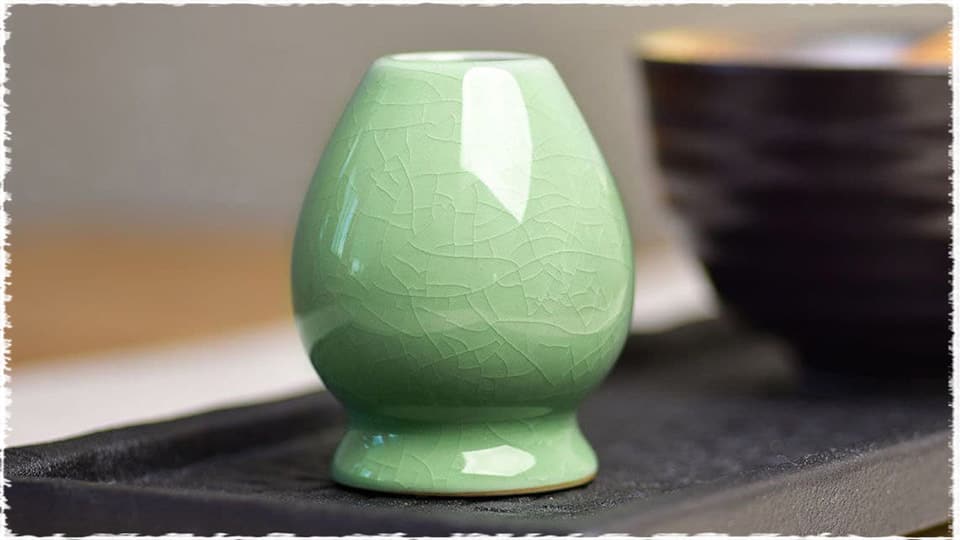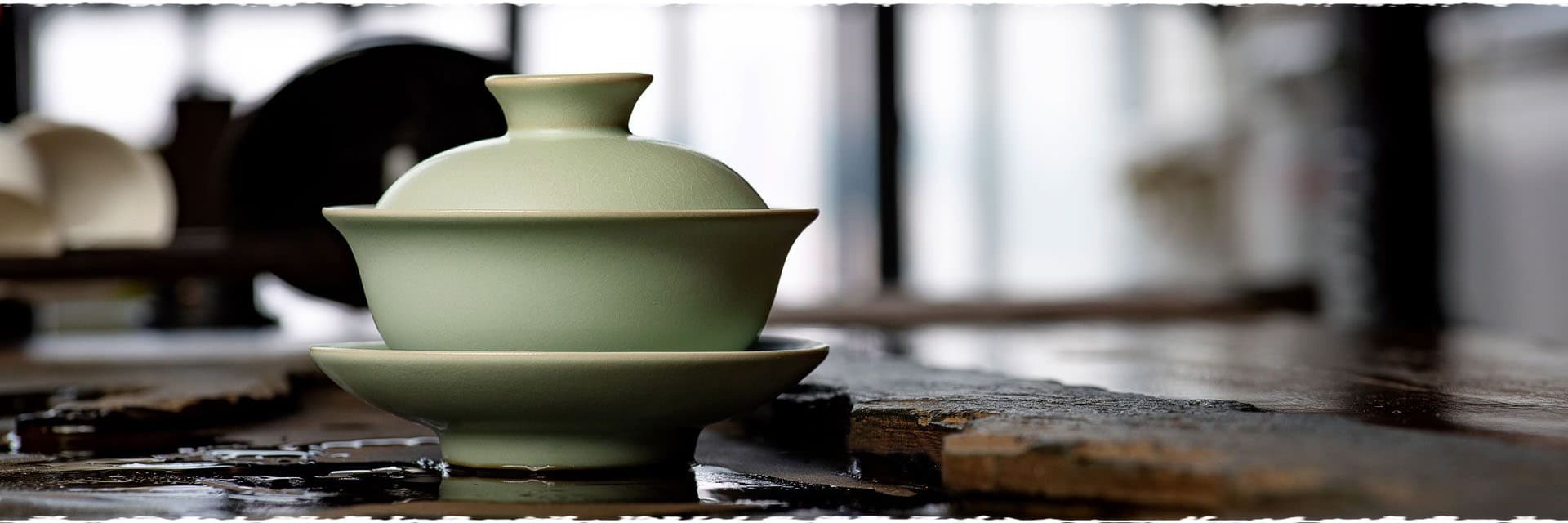Most of the utensils were pottery before the Song Dynasty in China. The arrival of the five famous kilns also signaled the arrival of the ceramic age. The five kilns were famous for producing Chinese ceramic during the Song dynasty. They are respectively Ru kiln, Guan kiln, Ge kiln, Jun kiln, and Ding kiln.
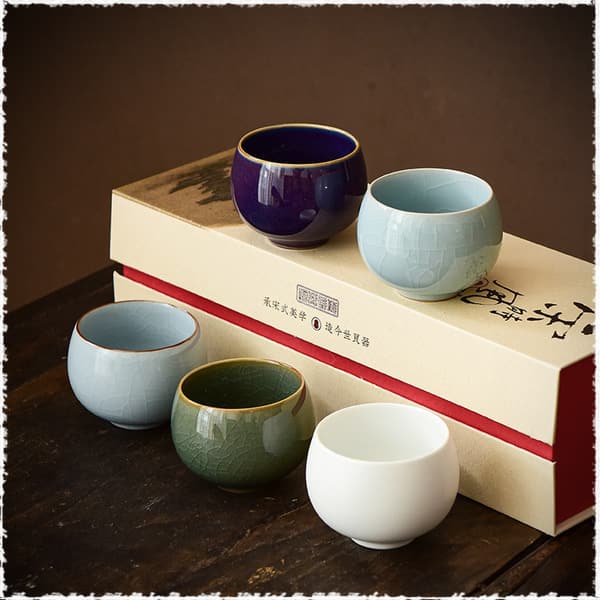
The champion of the porcelains: Ru kiln
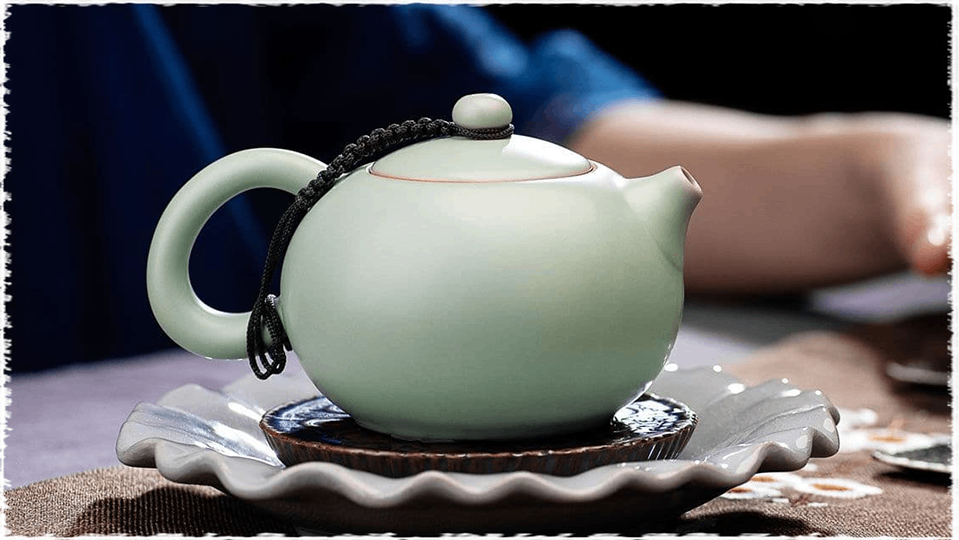
Ru kiln was built in the late Bei Song Dynasty and was listed as the first of the five famous kilns. It was located in ancient Ruzhou (now in Henan Province), an official Kiln for the royal family. All its porcelains were featured with a delicate and neat body, glaze called “like jade, non-jade but better than jade.”
Ru kiln is famous for firing celadon porcelain; the primary glaze colors are sky blue, bean blue, pink blue, and so on. The celadon of Ru porcelains contains agate in the glaze; the color is green and crystal, which is delightful for the eyes and has the characteristics of “green as the sky, surface as jade.” The surface is cicada-wing patterns with small openings called “crab claw patterns.”
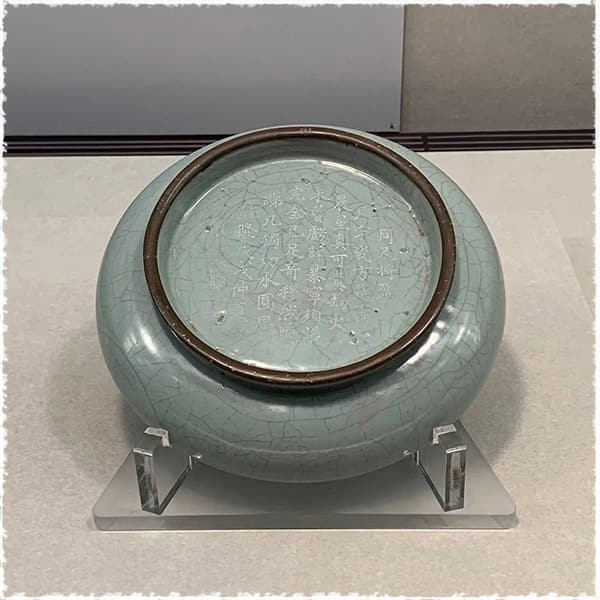
However, Ru Kiln only worked for a short time. Later, it was invaded by the Jin army, and the Ru kiln was destroyed due to the long-term military disaster; the skills were lost.
Ru kiln was only been working for around 20 years. Due to the short firing time, the porcelains were particularly scarce in the Nan Song Dynasty. Less than 100 recognized wares have been passed down to this day, making these wares very valuable.
Purple mouth and iron foot: Guan Kiln
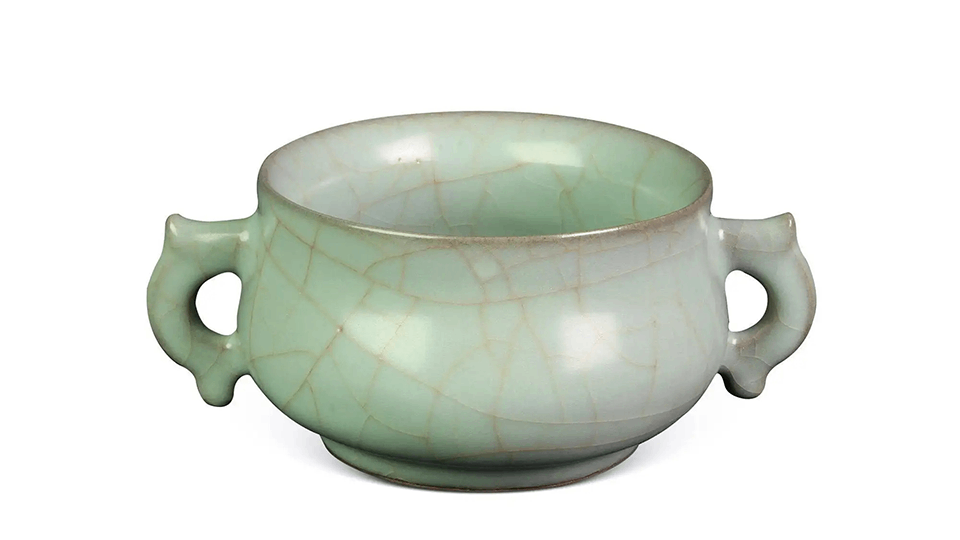
After the demise of the Bei Song Dynasty, a new kiln was built on Hangzhou‘s Fenghuang Mountain During the Nan Song Dynasty. The exact kiln address is still in doubt. “Guan” meaning the government in Chinese, showed that Guan Kiln was the official kiln that only produced fine porcelains for the royal family. Hence, it is noble and rare to become people’s first impression of Guan Kiln.
The three most popular glaze colors were moon white, pink green and bright green. The upper rim is a purplish color because of the thinner glaze, and the lower rim with a dark iron color. There was a saying that “purple mouth and iron foot” was a characteristic of Guan porcelains.
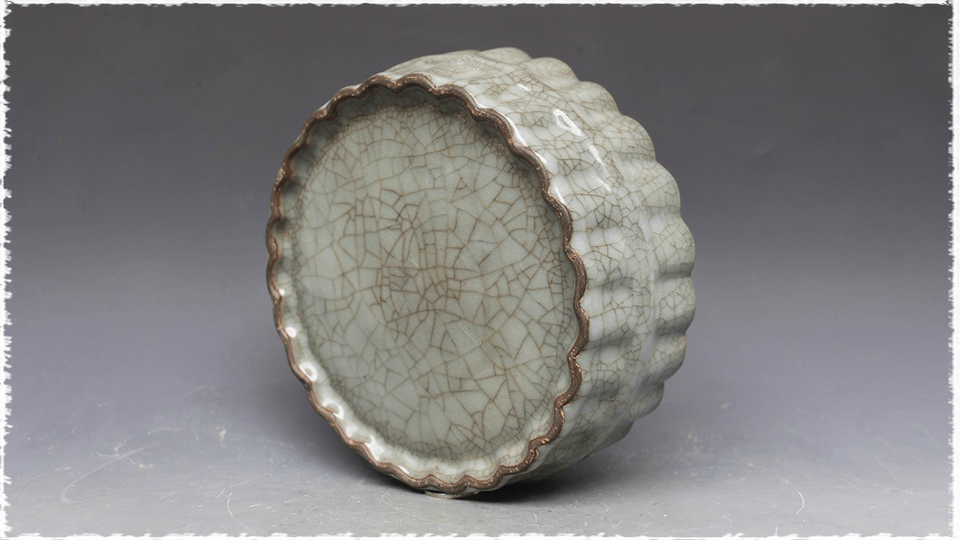
According to legend, after the porcelains were made, the royal workers would destroy the rest after they picked. Only fine products can be presented to the palace for the royal family’s use. Because of this, the amount of Guan porcelains worldwide is scarce.
Gold thread and iron wire: Ge Kiln
Although the precise location has yet to be determined, some academics and experts think that Longquan, Zhejiang, was the address of the kiln. It was fired in the middle or late Nan Song Dynasty.
The color of the glaze is mainly gray and blue, and pink green 、 moon white. The glazed sheen is like a slight perspiration on the skin, and it also seems there is a layer of oil on the surface. The most striking feature is that the glaze has large and small cracks. The color of the small crackle is golden yellow, while the large crackle is iron black. This double crackle style is called “gold thread and iron wire.”
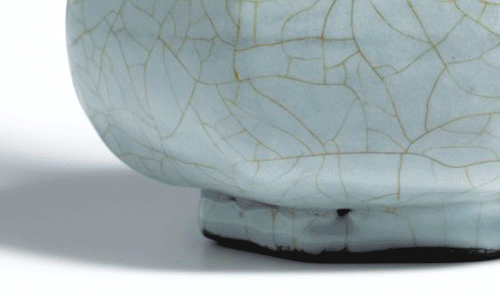
Colorful: Jun Kiln
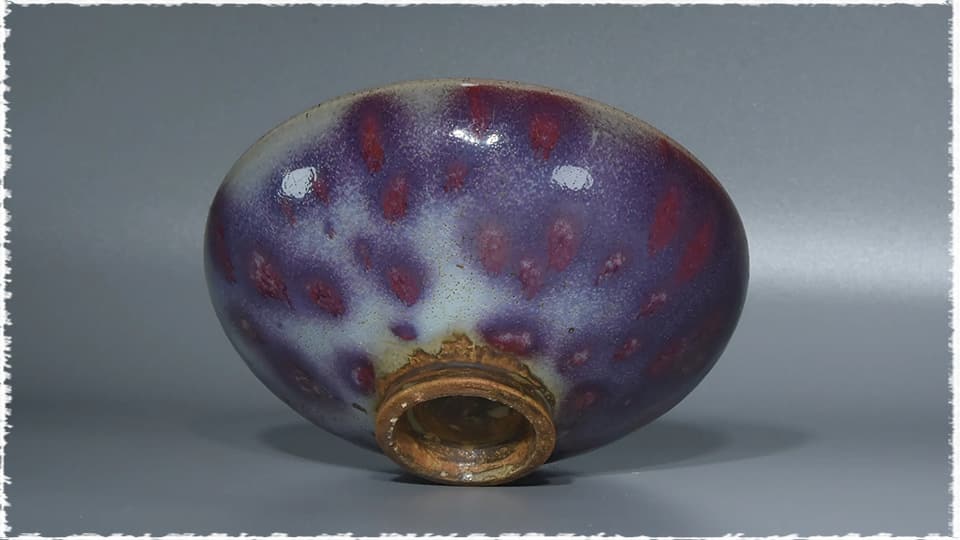
Jun Kiln began in the Tang Dynasty and flourished in the Bei Song Dynasty. The location was in today’s Bagua Cave, Yuzhou City, Henan Province; it was called Junzhou in the Song Dynasty, thus called “Jun Kiln”. Jun porcelains have traditionally been considered the “treasure of the country” and enjoy the reputation of “Jun porcelains are priceless.”
Jun porcelains are fired twice; the first time is unglazed, then the glaze is added and fired again after the first firing. When monochromatic glazes dominated the world in the Song Dynasty, copper oxides were creatively used as colorants to produce a variety of glaze colors such as blue-red, purple spots or pure azure. It is a significant invention in the history of Chinese porcelain, called kiln change. Because the copper red glaze is very sensitive to temperature and the environment in the kiln, if there is a slight difference, the red color will vary and become a bit special. However, this kind of kiln change often brings unexpected effects. Therefore there is a saying that “one color enters the kiln and gets colorful porcelains.”
Another feature of Jun porcelains is that the glaze has irregular flowing lines. This is because the enamel layer is thick. During the firing process, the glaze flows naturally to fill the gaps and cracks, and the glaze is formed similarly to earthworms crawling in the dirt.
White porcelain has mang: Ding Kiln
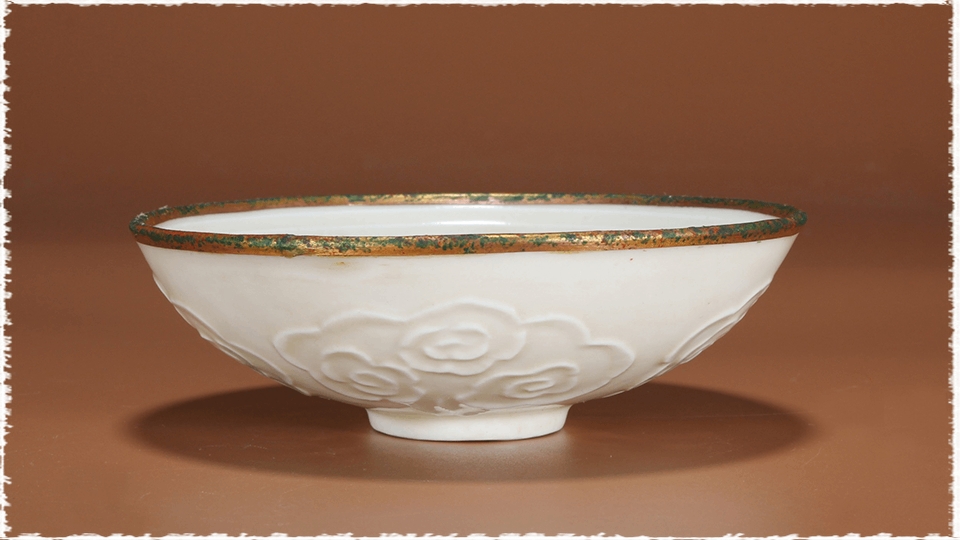
Ding kiln was originally fired in the late Tang Dynasty and prospered in the Bei Song Dynasty. The site of the kiln is in Quyang County, Hebei Province, and it was given that name since it belonged to Dingzhou in the Song Dynasty.
Ding kiln is famous for producing white porcelain and also firing black glaze. Before firing, each ware’s rim was scrubbed clean to remove the glaze. The resulting roughness of the rim is called mang kou (芒口). It could be uncomfortable when pressed to the lips, so to solve the problem and to add a further decorative feature, the rim was ornamented with gold, silver or copper rings. Many glaze droplets are hanging down on the glazed surface of the rim, shaped like “tears.”
In the early Bei Song Dynasty, the composition of carved flowers in Ding porcelains was simple, and most were lotus. In the middle and late Bei Song Dynasty, the carved flowers were exquisitely decorated, and carved images of different depths, with a strong three-dimensional sense. The decorative themes were generally flowers and fruits, lotus, ducks, birds, clouds, and dragons. The prints are primarily flowers, lotus, chrysanthemums, peonies, etc., and animal motifs such as mandarin ducks, dragons, phoenixes, lions, etc. The pictures are precise and symmetrical.
If you enjoyed this article, you might also like to read the following articles:
Yao Bian (furnace transmutation) in Teaware
Jianshui Zi Tao Purple Pottery Teapot – One of China’s Four Famous Pottery
 Exploring the Charms of 2024 Spring Tea Garden with Angel
Exploring the Charms of 2024 Spring Tea Garden with Angel Yingde Black Tea
Yingde Black Tea Matcha vs. Green Tea Powder
Matcha vs. Green Tea Powder

